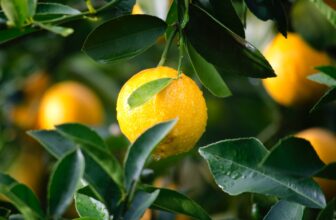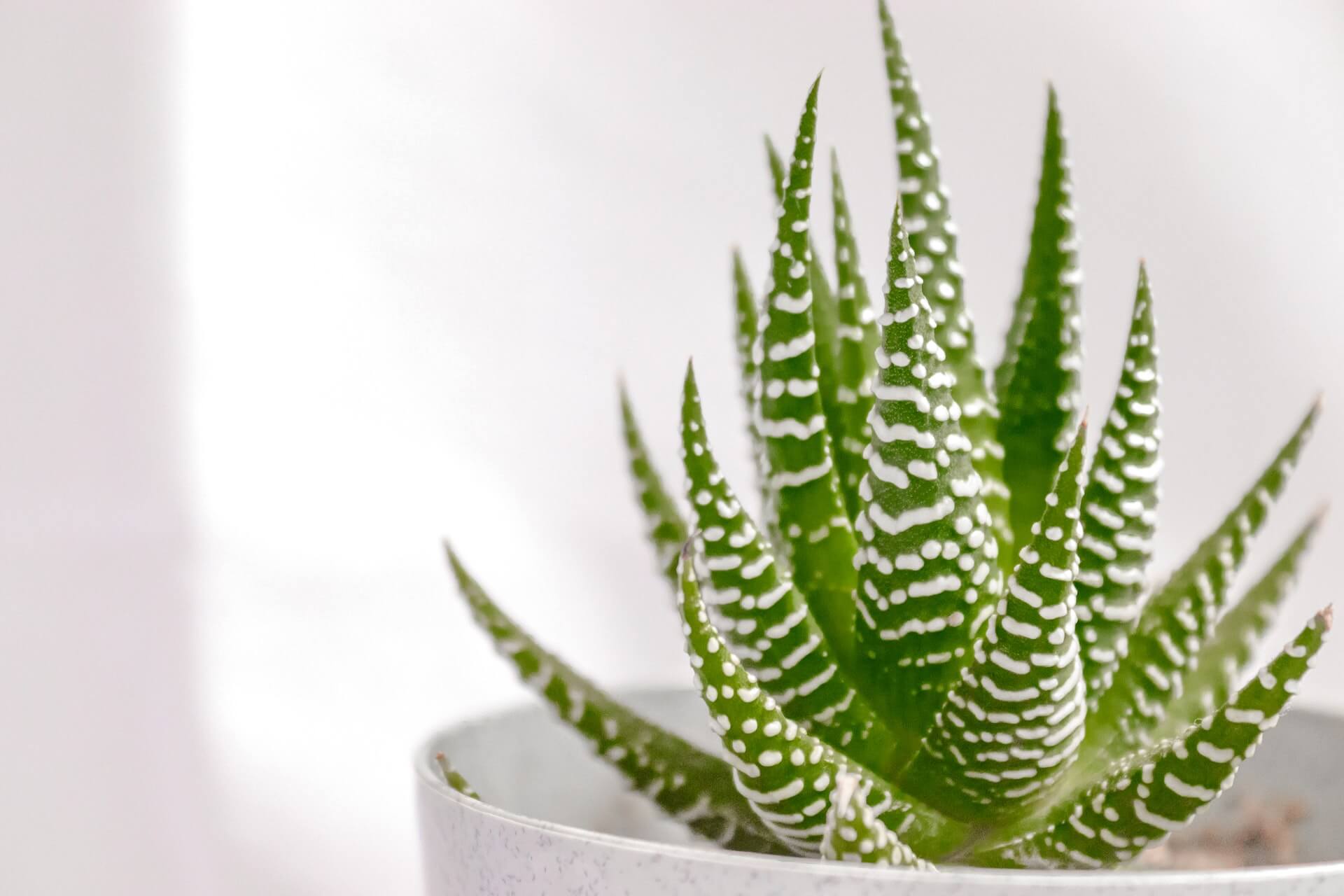
Table of Content
Aloe vera is one of the easiest plants you could try growing in your garden. Although not many people know this, aloe vera is a succulent which means, like the cactus, it can grow in dry conditions and store water in its leaves for long periods of time.
Aloe vera is a popular plant around the world because of its many uses for health, beauty, and culinary purposes. If you’re a beginner gardener looking for a low-maintenance plant that’s fun and easy to grow, the aloe vera is an excellent choice for you! Here’s what you need to know about growing your very own aloe vera plants.
About Aloe Vera
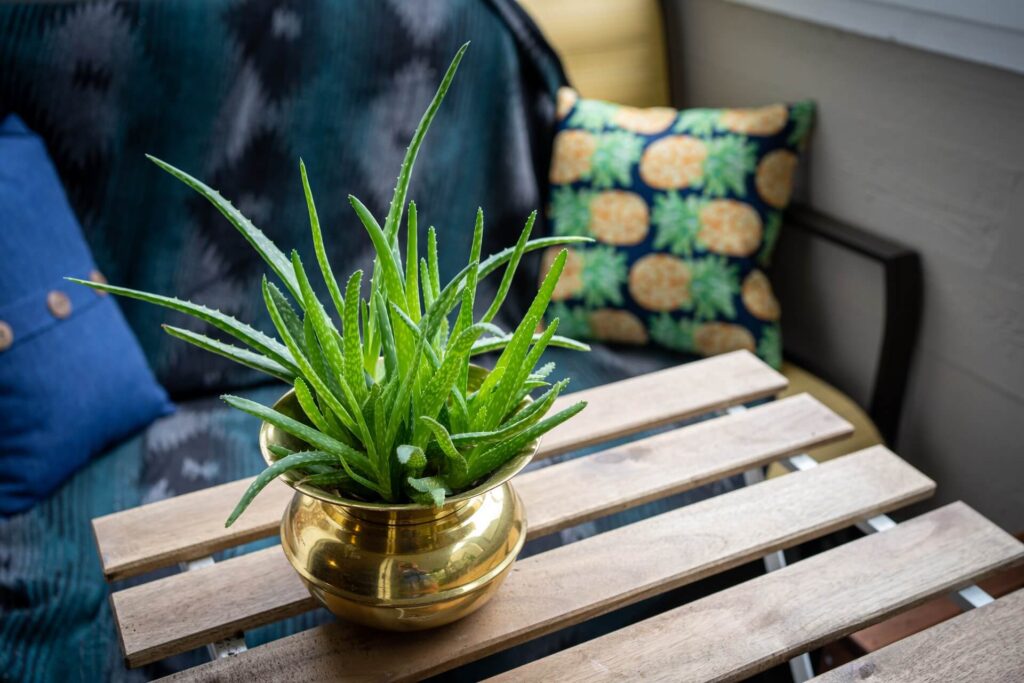
Aloe Vera (Aloe barbadensis or Barbados aloe), is also known by many other names including First-Aid Plant, Burn Aloe, and True Aloe. Its name is derived from the Arabic word ‘aloe’ which means “shining bitter substance” and the Latin word ‘vera’ which means “true”.
Native to Southern Europe, North Africa, and the Canary Islands, aloe vera is grown around the world in tropical and semi-tropical climates. It’s also a popular house plant grown in many home gardens or indoors for its beauty and its various benefits.
The Aloe vera plant has a very short stem from which the spongy thick leaves branch out. These leaves can grow up to 39 inches in length! The leaves are spongy with spines along the edges and when cut along the edge and peeled from the top, there’s a colorless gel inside. This gel is what contains all the benefits and is used to make commercial and medicinal products.
Aloe vera also produces flowers but it’s very rare to see them as it doesn’t get the right amount of light for blooming or may not bloom if you harvest the leaves. The spiky flowers bloom on stems that grow to a height of about 35 inches in colors of yellow, red, or orange. The blooms appear only when the plant matures and this takes about three to four years. If the aloe vera is grown indoors as a house plant, then it might take a few more years for it to bloom. It blooms during late spring or early summer.
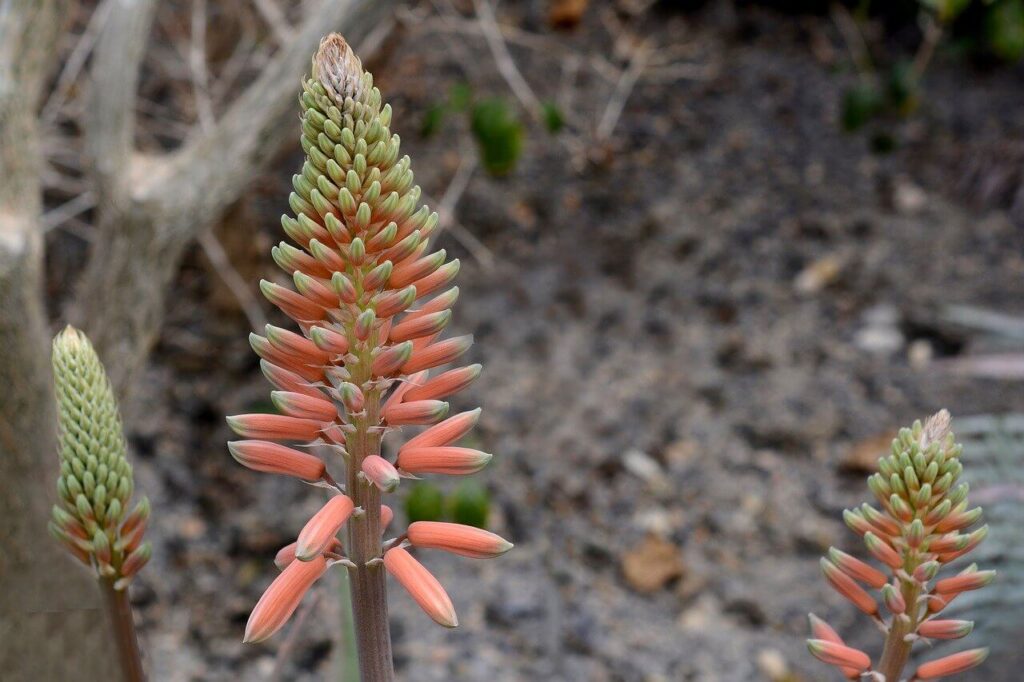
Aloe Vera Varieties
There are over 300 varieties of aloe vera which include the following common ones:
- ‘Aloe polyphylla’: Aloe polyphylla is a large egg-shaped plant which grows to about 20 -24 inches. Its leaves have purple shades on the tips.
- ‘Aloe variegata: Aloe variegata is also known as tiger aloe due to the uneven white stripes present on their short smooth leaves.
- ‘Aloe aculeata’: Aloe aculeate has thorns and is prickly with pert leaves. It also has a lemony hue.
- ‘Blue Aloe’: Blue aloe are a larger species which has leaves with silver-blue shades.
- ‘Aloe ciliaris’: Aloe ciliaris is commonly known as the climbing aloe and has cylindrical, orange blooms.
- ‘Aloe brevifolia’: Aloe brevifolia is commonly known as the shortleaf aloe. It has round leaves with a bluish hue that turns into a golden or rose color when exposed to sunlight.
What is Aloe Vera Used For?
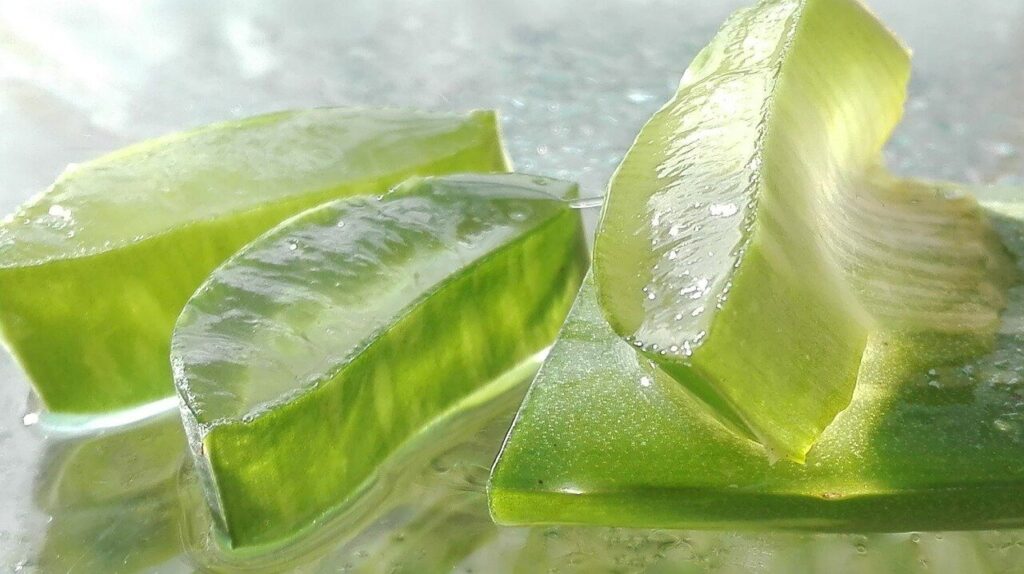
Throughout history, aloe vera has been used for medicinal purposes, dating all the way back to ancient Egypt. Even today it’s used to soothe burns or insect bites, to relieve heartburn, lower blood sugar levels, and relieve constipation.
It’s also used as an alternative to mouthwash and when consumed, it can cool down the body. The gel is extracted ad made in various medications and drinks, but it’s also used for topical applications. This plant also has the ability to purify the air, making it ideal to grow indoors.
Aloe vera is a popular ingredient in many beauty products as it’s safe to use. It’s also safe to consume, but if ingested in large amounts it can cause indigestion or nausea. While it’s safe for humans, aloe vera can be highly toxic to animals so if you have pets, make sure to keep the plant safely out of their reach. It can be harmful to pregnant women, people on certain types of medications, or with certain disorders.
How to Plant and Maintain Aloe Vera
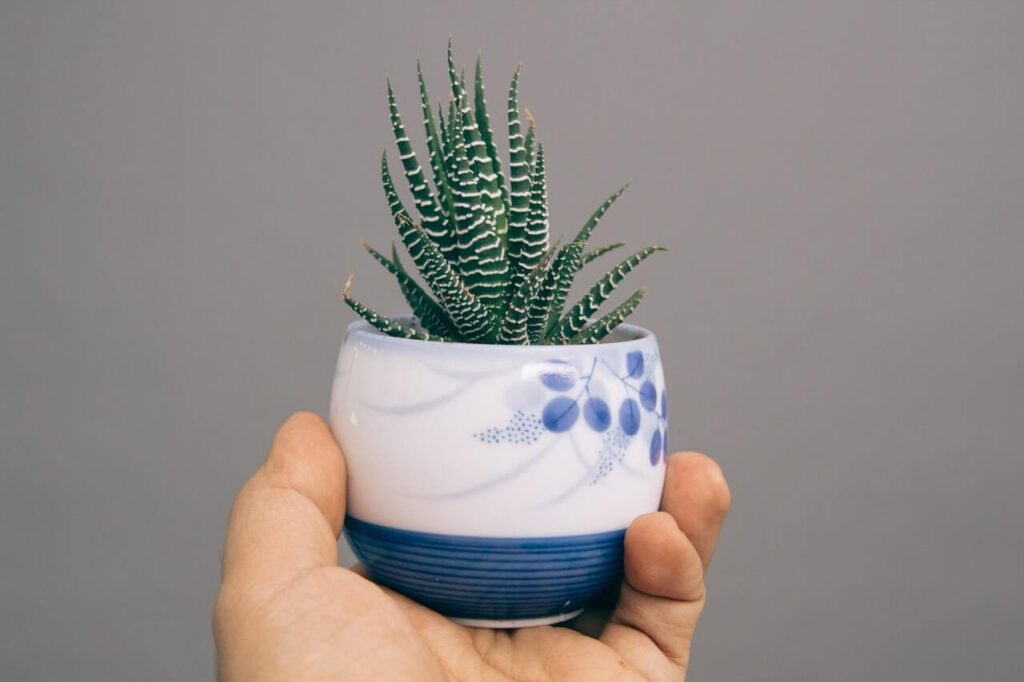
Aloe vera plants can be grown from seeds, by repotting the baby plants from the parent plant, or by pruning the leaf and planting it (this method is not that effective, however). These plants do not have roots that grow deep into the soil, so if you’re planning to plant them in pots, choose pots that are wide and short instead of deep and narrow. As mentioned earlier, aloe vera is extremely easy to grow, but there are a few things to keep in mind. Let’s take a look:
Soil
Aloe prefers well-drained soil as stagnated water can cause the roots to rot. When planting outdoors, choose an area where you’ve grown other succulents, since they all prefer the same conditions and do well growing together.
The best place to plant them is wherever there is a slope, as water will drain easily, and the plant won’t get damaged. You can use either sandy or gravelly soil, which is ideal.
Sunlight
Aloe vera plants do need bright light but placing them in direct sunlight can cause the plant to dry out and get ‘burned’, which means the leaves will turn yellow or brown. If by any chance they are under direct sunlight, make sure to give them enough water. However, don’t water them too often or too much, or the water can pool underground and cause root rot.
If you want to grow the plant indoors, place it on a window-sill facing west or southwest. If your plant is growing leggy, meaning that it has more stem than leaf, it’s a sign that it’s not getting enough light while leaves turning red indicate that it’s exposed to too much sunlight. Aloe vera can also be grown under artificial light.
Watering
Since aloe is a succulent that stores water in its spongy leaves, it can thrive in drought conditions. However, leaving the plant for very long without water can cause the leaves to shrink and wrinkle. As soon as you notice this happening, water it immediately and it will get back to looking the way it was. However, if you leave it to dry out for too long, the prolonged stress can cause the leaves to turn yellow and slowly die.
You won’t need to water your plants during the rainy season, but make sure to keep them safe from water puddles. If you notice water pooling around the plant, dig a small drain to let the water flow. During winter the plant goes dormant and will not need water if it was given enough water in the growing phase.
Fertilizing
You won’t need to fertilize your aloe vera at all, but if you want to give it an extra boost, use a houseplant fertilizer once a year. The best time for fertilizing is in the spring. Make sure to use a houseplant fertilizer at half strength which contains phosphorus.
Temperature and Humidity
Aloe vera grows best in temperatures of 13°C to 27°C (55°F to 80°F). Temperature is not an issue when grown indoors as indoor temperature generally falls in this range. If you usually leave the plants outside, bring them indoors during the winter. You can slowly place them out again from May to September, but make sure to bring them back indoors in the evening as the nighttime temperature can be too cold for the plants.
Aloe vera plants can’t tolerate frost and can die if left out in the winter. In case of unexpected frost, make sure to cover your aloe plants with blankets to keep them warm, or if they can be moved, bring them doors immediately.
Propagation
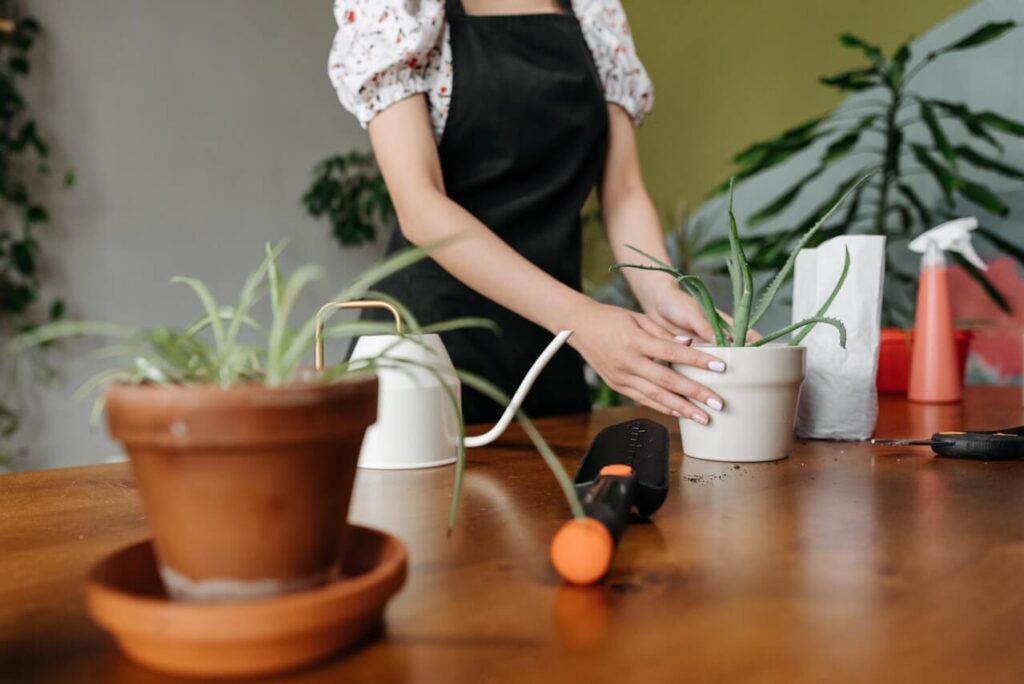
Aloe vera can be propagated from seeds but this can take an extremely long time. If you want faster results, use the offsets or plantlets that develop at the roots of the plant. Wait until the baby plants are ready to grow on their own.
When removing the baby plant from the parent plant make sure to take them carefully with their own roots which have to be gently removed from the parent plant. You can use a knife to separate the plants but be careful not to damage them by cutting off or ripping out the roots.
Pests and Diseases
There are many pests and diseases that can cause harm to the growth of your aloe plants. Some of the most common ones include mealybugs, scales, and mites. Here are some tips to help you get rid of these insects:
- Mealybugs: To get rid of mealybugs, spray the plant with water and wipe it down with a soft cloth.
- Scales: Mix 1 tablespoon of insecticidal soap and a solution of 1 cup isopropyl alcohol mixed in 1 cup of water. Spray this solution on the scales every three days for two weeks.
- Mites: Pruning is the best solution for you to save your affected plant and other aloes from getting affected. Prune the affect parts of the plant and burn them so that there’s no risk of spreading.
Like pests there are some diseases that can harm the plant:
- Root rot: Root rot is when you can see the plant roots turning into dark brown and softens to the point where a slight touch will make them fall off. This is caused by a fungus.
- Soft rot: This is a bacterial disease caused in the leaves which makes water-soaked spots. The leaf starts decaying from the inside, gets squashy and falls off.
The main cause of the above-mentioned diseases is overwatering, so you’ll need to watch out for this.
The Take-Away
If you’re someone who loves gardening but leads a busy lifestyle and has no time for watering and maintaining plants, aloe vera is a great choice. Not only is it visually appealing, but it’s also a useful plant to grow in your home. All it takes is the initial effort of planting and occasional care and you’ll soon have your very own aloe vera garden!






